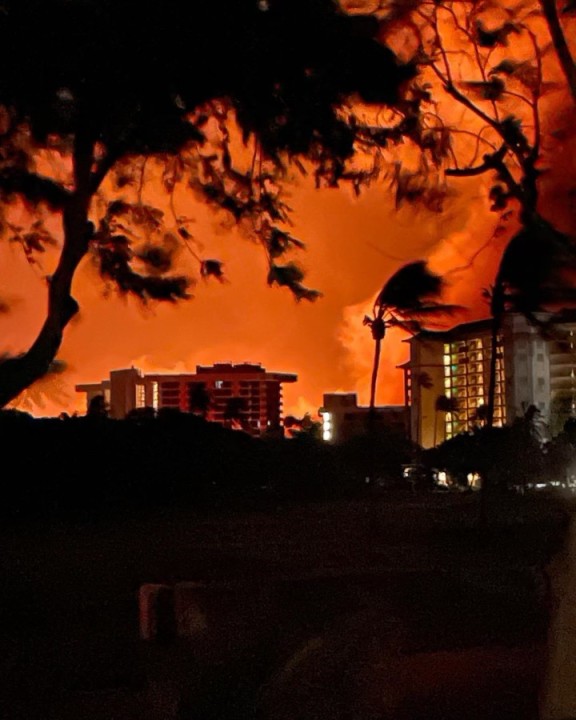In the heart of Lahaina, Hawaii, a shrill smoke alarm jolted Manny Ceralde from his afternoon slumber. Groggy and disoriented, he peered out of his window to witness a terrifying sight: his neighbor’s roof being consumed by swirling blackness, swallowed whole by the inferno raging through the sky.
With a sense of urgency, Manny rallied his family—his 14-year-old daughter, 50-year-old sister, and 75-year-old mother—to flee their home. But amidst the chaos, his autistic son, 19, remained oblivious to the danger, wandering back into his bedroom.
Aware of the dwindling time, Manny guided his son outside, feeling the weight of responsibility to ensure his family’s survival. As they hurriedly evacuated, their neighborhood, Kuhua Camp, once a community of modest homes built for sugar cane workers, now transformed into a nightmare of swirling flames and choking smoke.
For the residents of Kuhua Camp, the catastrophic wildfire of August 8th was a descent into hell. Over the years, the neighborhood had evolved from its humble beginnings into a labyrinth of tightly packed homes and narrow streets. As the fire tore through the landscape, exacerbated by decades of unchecked expansion and congestion, Kuhua Camp became a death trap.
In the aftermath of the tragedy, the extent of the devastation became painfully clear. Nearly half of the 100 victims listed in Lahaina’s official death toll hailed from Kuhua Camp, underscoring the severity of the situation. Despite efforts by local authorities to evacuate residents, the rapid spread of the fire overwhelmed their response, leaving many trapped in the fiery maelstrom.
As the community grappled with the aftermath, questions arose about the systemic issues that contributed to the disaster. Residents had long voiced concerns about the neighborhood’s congested layout and limited access routes, fearing that such conditions could lead to catastrophic consequences.
For Manny and his family, the harrowing ordeal was a stark reminder of the fragility of life and the importance of preparedness in the face of natural disasters. As they navigated the treacherous streets, their survival hung in the balance, a testament to the resilience of the human spirit in the face of unimaginable adversity.

